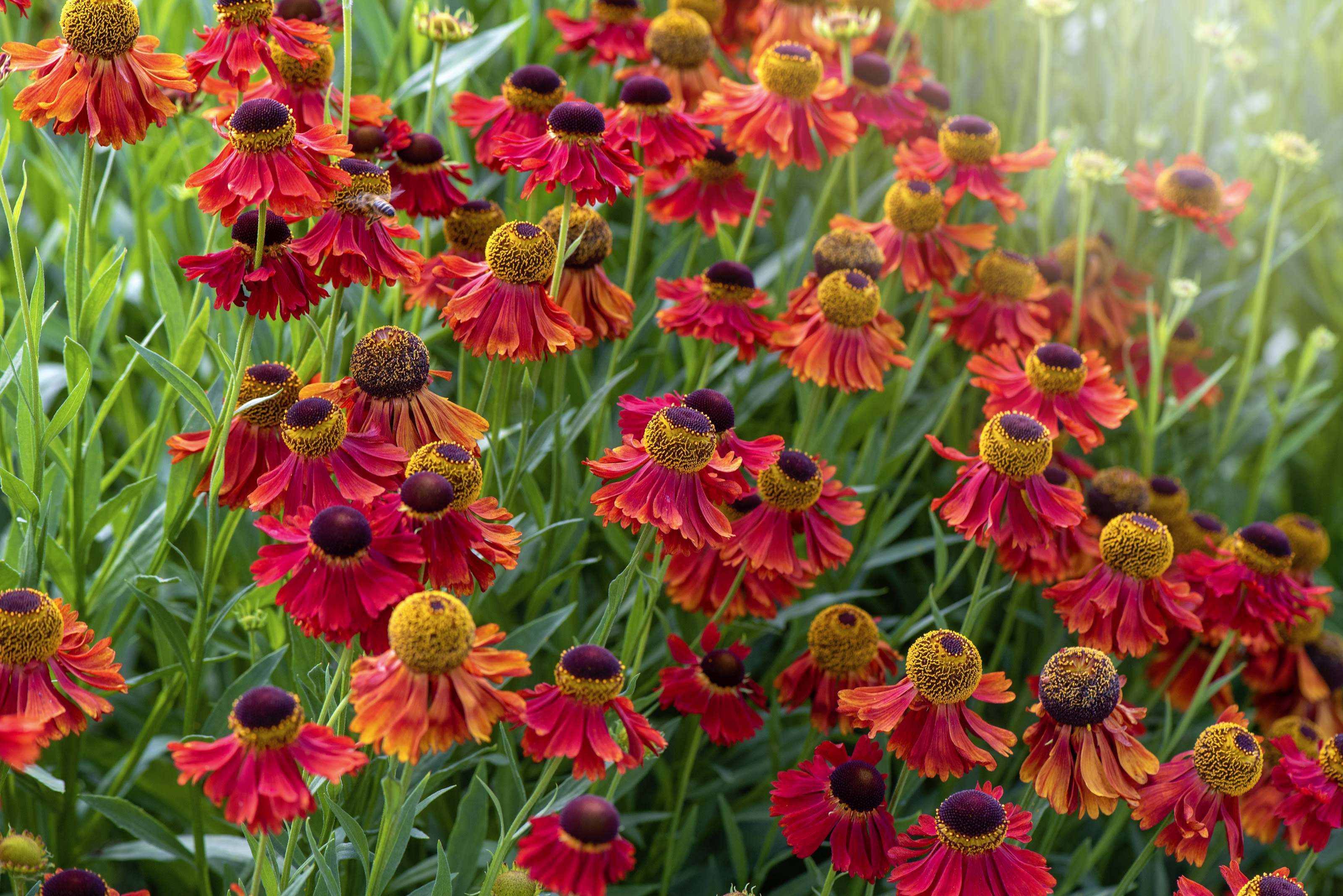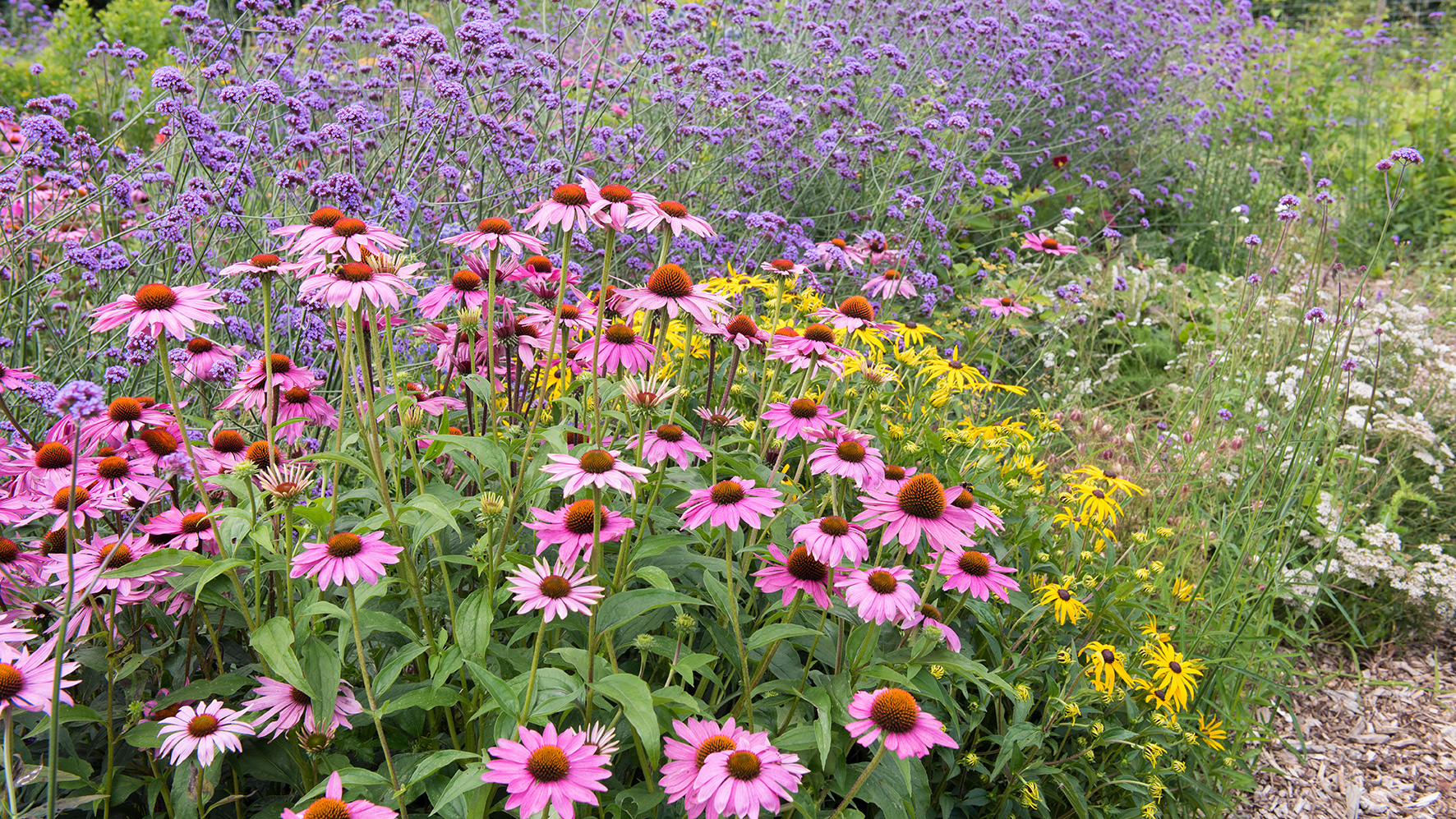Monty Don reveals why the Chelsea chop pruning method will give you flowers for longer
Enjoy beautiful beds and borders for longer with Monty Don’s clever Chelsea chop pruning strategy


If you enjoy the blooms of perennials like border sedums, golden rod, heleniums and lysimachia in your garden, you’ll be delighted to know there’s a way to benefit from their flowers for longer. Prune in May and you can extend the flowering season of plenty of favorite garden flowers.
We’re all for ways to get the very most from our gardens and flowerbed ideas, so when celebrated gardener and broadcaster Monty Don shared the secrets of this late-May pruning – the so-called Chelsea chop – we were all ears.
Monty Don’s top tips on extending the flowering season with the Chelsea chop

Echinacea purpurea and verbena bonariensis
Monty Don shared his advice on extending the flowering season of perennials on his website. We’re sharing Monty’s top tips along with some of our own.
The Chelsea chop might sound like a haircut, but in fact the technique of cutting back perennials in May owes its moniker to the fact that it is carried out in the weeks around the Chelsea Flower Show, Monty explains.
The show traditionally takes place in the third week of May, although this year’s main event is postponed until 21 to 26 September 2021 because of the uncertainty caused by the pandemic. Can't wait until then? The virtual Chelsea Flower Show 2021 begins on 17th May and promises to have plenty of expert videos and tips on offer.
If you don’t get the Chelsea chop done in late May, you can carry it out in early June instead.
What plants can you prune using the Chelsea chop?

Vibrant orange flowers of helenium
Monty advises that the Chelsea chop extends the flowering season of late-flowering herbaceous perennials. They’re plants that are a mainstay of beds and borders, providing eye-catching color and interest.
Where you have several clumps of plants such as border sedums, golden rod (solidago), heleniums and lysimachia, Monty says, you should cut one of them around half way up the existing growth. Just one big clump? Reduce one third of the plant, Monty advises.
You’ll need a set of the best secateurs or shears to do the job. Make sure they’re sharp and clean before you start cutting. Don’t worry if Chelsea chopping feels a bit drastic the first time you do it. You won’t harm the plants.
Aside from the plants Monty mentions, you might also want to use the Chelsea chop technique on Echinacea purpurea or purple coneflower, phlox, nepeta, penstemons and rudbeckias.
What are the benefits of the Chelsea chop?
The result of the Chelsea chop is that the part of the plant you’ve pruned produces side shoots with extra flowers, Monty explains. These will bloom later than the parts you didn’t cut for a display that extends into autumn. Bear in mind that the flowers will be smaller but you’ll get more of them.
The Chelsea chop has other benefits, too. Plants won’t get as tall, leggy and untidy and need less staking, so as well as flowering for longer, garden borders can look better all summer long. Chop at the front of a border and you’ll get more compact plants that won’t flop on to the lawn.
Another of advantage of doing the Chelsea chop is that you’ll provide pollen and nectar for bees later into the season, helping to support your wildlife garden ideas.
Will you be giving the Chelsea chop a go this spring?

Sarah is a freelance journalist and editor writing for websites, national newspapers, and magazines. She’s spent most of her journalistic career specialising in homes and gardens and loves investigating the benefits, costs and practicalities of home improvement. It's no big surprise that she likes to put what she writes about into practice, and is a serial house revamper.
